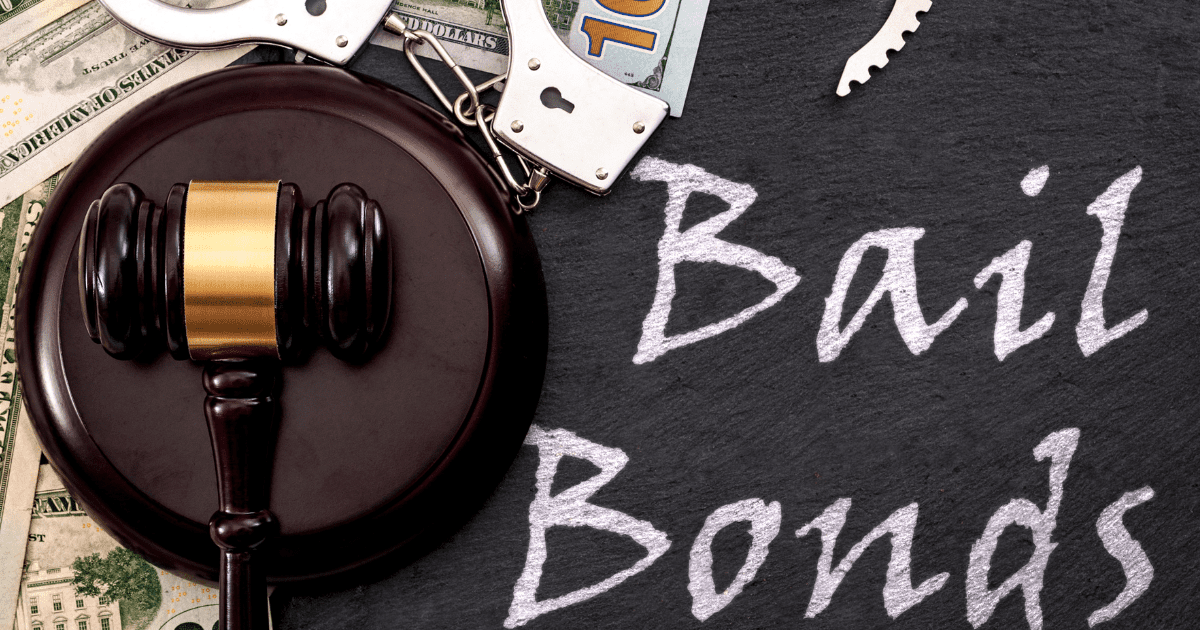Exactly how to Select the most effective Bail Bonds for Your Scenario
Exactly how to Select the most effective Bail Bonds for Your Scenario
Blog Article
Just How Bail Bonds Job: A Detailed Introduction
Bail bonds play a crucial function in the legal procedure by providing a device for people to protect their release from custody while waiting for trial. Comprehending the intricacies of just how bail bonds work, consisting of the roles of courts, bail bondsmensman, and the various charges entailed, can be vital for anyone navigating this intricate system. As we explore the various sorts of bail bonds and the aspects that affect their expenses, it comes to be apparent that the duties tied to these contracts prolong much beyond simple economic transactions. What ramifications do these duties hold for defendants and their households?
What Are Bail Bonds?
Bail bonds are typically used in the criminal justice system as a financial guarantee that an accused individual will appear in court as required. When a person is detained, a court may establish a bail amount based on various aspects, consisting of the intensity of the infraction, the accused's criminal background, and the danger of flight. If the implicated can not afford the bail quantity, they might look for the help of a bond bondsman.
A bail bond is a contract in between the accused, the bondsman, and the court, making sure that the accused will satisfy their legal obligations. For a cost, commonly a percentage of the total bail quantity, the bondsman provides the court with a guaranty that ensures the bail. If the charged stops working to appear in court, the bail bondsman is in charge of paying the full bail total up to the court, which might lead them to go after the defendant for recovery.
Bail bonds serve to promote the launch of individuals waiting for test, enabling them to maintain their work and household obligations while ensuring conformity with court appearances. This system is indispensable to stabilizing the rights of the charged with the rate of interests of public security and judicial stability.
The Bail Process Discussed
After recognizing the function of bail bonds in the criminal justice system, it is necessary to outline the bail process itself. The bail process starts when an individual is arrested and taken right into wardship. Complying with the arrest, the offender is usually brought prior to a judge for a first hearing, where the court will figure out whether to grant bail and established the quantity.
If bail is provided, the accused has numerous alternatives to secure their launch. They might pay the full bail amount in cash money, which is returned upon the conclusion of their court responsibilities. The offender can look for the support of a bond bondsman, who bills a non-refundable charge-- usually a percent of the total bail amount-- to post bail on their behalf.
When bail is posted, the defendant is launched from wardship with the understanding that they need to go to all arranged court appearances. Stopping working to appear can lead to the loss of the bail and added lawful repercussions. The process wraps up when the situation is solved, whereupon the bail is either returned or retained by the bail bondsman as payment for their services.

Kinds Of Bail Bonds
Numerous options exist when it involves securing a launch from custodianship through bail bonds. Understanding the different types can aid offenders and their family members make notified options.
The most common kind is the guaranty bond, which includes a third-party bail bondsmansman that assures the full bail quantity to the court in exchange for a non-refundable fee, generally around 10% of the bail quantity. This choice is widely made use of as a result of its availability for individuals that may not have the financial ways to pay the full bail upfront.
An additional type is the money bond, where a co-signer or the accused pays the overall bail quantity in cash directly to the court. Upon effective completion of the case, the funds are refunded, minus any type of appropriate fees.

Finally, migration bonds are particularly designed for people apprehended by migration authorities, facilitating their release while they await lawful process. Each sort of bail bond serves unique purposes, providing to various conditions and needs within the lawful system.
Elements Influencing Bail Prices
Several vital variables influence the total cost of bail, determining just how much an accused or their family members may require to pay for release. Among the primary variables is the extent of the charges. Felony fees generally lead to greater bail quantities contrasted to misdemeanors because of the regarded risk of flight and the possible consequences of the infraction.

The accused's economic situation can likewise affect the bail quantity. Courts may think about an accused's revenue and assets when identifying bail, possibly leading to higher expenses for those with higher funds. The availability of check these guys out security might impact the necessary payment. If a bondsman views a higher risk, they may set a higher premium, more this hyperlink boosting the expenses related to securing a bail bond. Recognizing these factors can assist defendants and their family members plan for the monetary effects of securing bail.
Responsibilities of the Indemnitor
Once bail has been secured, the responsibilities of the indemnitor, or the person who agrees to back the bail bond, come into play. The indemnitor is largely accountable for guaranteeing that the defendant participates in all set up court appearances. Failure to do so might lead to the forfeiture of the bail bond and possible lawful repercussions for the indemnitor.
In addition, the indemnitor is bound to pay back the bail bond company the total of the bond if the offender stops working to appear in court. This consists of any kind of charges or costs sustained by the bail representative in recuperating the defendant, which might even more rise the monetary burden on the indemnitor.
The indemnitor needs to also keep open interaction with both the bail and the offender bondsman, giving any essential updates connected to the offender's circumstance. It is important for the indemnitor to continue to be aware of the lawful obligations and repercussions associated with the bail bond, as ignorance may cause unintended responsibilities.
Conclusion
In summary, bail bonds serve as a critical system within the criminal justice system, promoting the release of accuseds while guaranteeing their look in court. Understanding the different kinds of bail bonds, the complexities of the bail procedure, and the factors influencing bail expenses is crucial for navigating this complex landscape. Furthermore, recognition of the duties borne by the indemnitor highlights the significance of notified decision-making when involving with bail bond solutions.
Comprehending the details of how bail bonds function, including the functions of courts, bail bondsmen, and the different charges included, can be crucial for anyone navigating this complex system.After understanding the function of bail bonds in the criminal justice system, it is essential to describe the bail process itself. The defendant can seek the assistance of a bail bondsman, who bills a non-refundable cost-- usually a percentage of the total bail quantity-- to upload bail on their behalf.
If a bail bondsman perceives a higher danger, they may set a higher premium, further visit their website raising the prices linked with safeguarding a bail bond. Comprehending the different types of bail bonds, the intricacies of the bail procedure, and the aspects influencing bail expenses is necessary for browsing this complicated landscape.
Report this page